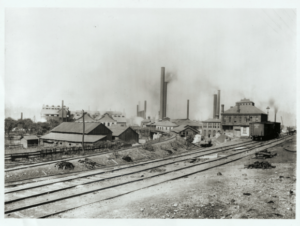COVID may be waning, but the ease with which government authorities were able to control citizens’ movements during the height of the pandemic has breathed new life into old utopian concepts. One such construct gaining traction is 15-minute cities, which appear harmless on the surface. But tyrants being what they are, liberty-minded people are more than a bit concerned about this rapidly growing movement.
What are 15-minute Cities?
City planners suggest society should be rearranged so life’s necessities lie within a 15-minute radius of a person’s home. This is not a new concept. At the turn of the 20th century, hundreds of “company towns” existed. They sprang up as jobs became available during the industrial revolution. Places like Clairton and Braddock, PA (of John Fetterman fame) were the norm rather than the exception. In the case of Western Pennsylvania, these were known as steel towns. These small municipalities had everything a resident could want. There was the town bank, the clothing store, and the local doctor and pharmacist. Folks walked to Main Street to get a loaf of fresh bread or an ice cream cone from the soda fountain in the drugstore. Sounds idyllic, right?
But then the steel mills went silent, and these small localities went to rack and ruin. The same happened in North Carolina when the textile mills shut down. These 15-minute cities became ghost towns – many of which remain to this day.
Now governments want to get involved and artificially create such living spaces. Science publication PHYS.ORG defined the movement by saying, “The concept, which originated from the French-Colombian urbanist Carlos Moreno, is the current zeitgeist in planning and calls for city design centered on people and their needs rather than being designed for cars.”
So, What’s the Problem?
Why would anyone be against getting rid of the long commute and working from home? Who could object to strolling down to the village to buy fresh fruits and vegetables from local farms? Well, the issue lies with a matter called freedom of choice. To make the 15-minute city work, everyone must participate. Thus, local governments are in the business of limiting when people are permitted to drive their cars giving authorities the right to monitor citizen movement.
In the UK, residents in Oxford went bat guano when local authorities introduced new traffic filters, including automatic license plate readers. The purpose of the filters is to “fine drivers from outside the county of Oxfordshire who entered central areas during high-traffic periods,” according to Bloomberg, which also noted, “Oxford residents will be allowed fine-free peak-hour access for 100 days per year, with residents of the wider county able to apply for a 25-day fine-free access permit.”
How generous of them. Those rules are for the proletariat – party members get free driving access. That’s a little hyperbole and sarcasm, but is it? The people of Oxford were so incensed that 2,000 demonstrators took to the street to protest their lack of mobility, and five people were arrested.
Fear Not, Conspiracy Theorists!
If your interest in discovering more about this new “pedestrian and climate change friendly” movement is piqued by this article, take a moment to hit your favorite search engine and explore the topic of 15-minute cities. You will likely read story after story of the “crazy conspiracy theorists” anxious and needlessly worried about 15-minute city planning. After all, it’s only a traffic reduction scheme, right?

Braddock,PA (Courtesy Getty Images)
Moreover, what you will discover is a massive media campaign being waged against those who find this move to promote “planet-saving” community ghettos abhorrent to their liberty – Don’t forget, it’s better for your health, too! Those who believe this might be personally intrusive are being labeled “far-right conspiracy theorists,” “paranoid” and “fringe.” One can already see the day when speaking against 15-minute cities will be banned from social media due to “violating community standards.”
European cities are at the vanguard of this movement in Copenhagen, Amsterdam, and Oslo. Meanwhile, plans for a 20-minute city in Detroit, MI, are underway, and a similar program known as the Complete Neighborhood concept is in place in Portland, OR. Our neighbors to the north also initiated a 15-minute cities program in Ottawa. “To achieve its ambition, the city is aiming to have residents make significantly more than 50 per cent of their trips by foot, bicycle, public transit or by carpooling,” according to a senior city planner quoted by the CBC. One wonders how Canadians will feel about such travel alternatives when it’s 15 below and snowing.
Limiting travel has always been the hallmark of communism, and it doesn’t take a conspiracy theorist to recognize the pitfalls of traveling down the 15-minute cities highway. It is, after all, a road paved with good intentions, but most of us already know where that road ends.
Do you have an opinion about this article? We’d love to hear it! If you send your comments to [email protected], we might even publish your edited remarks in our new feature, LN Readers Speak Out. Remember to include the title of the article along with your name, city, and state.
Please respect our republishing guidelines. Republication permission does not equal site endorsement. Click here.

